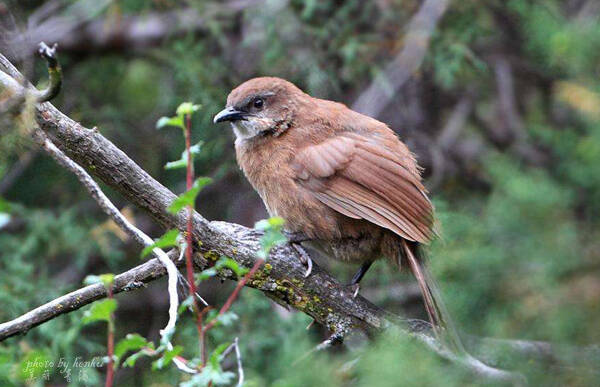Pterorhinus koslowi
IUCN
LCBasic Information
Scientific classification
- name:Pterorhinus koslowi
- Scientific Name:Babax koslowi,Tibetan Babax,Pterorhinus koslowi
- Outline:Songbird
- Family:Passeriformes Thrushidae G.Babbler
Vital signs
- length:28-30cm
- Weight:100-118g
- lifetime:No verification information
Feature
It is a species endemic to China, has scientific research value, and loves to eat harmful insects
Distribution and Habitat
Brown Babbler is a bird endemic to China, mainly distributed in Yushu, Nangqian, Zaduo in Qinghai, China, and Ranwu, Chaya, Zuogong and Qamdo in Tibet.
The nominate subspecies is mainly distributed in the Zachu River basin, a tributary of the Lancang River in Qamdo, Tibet, China, and in Nangqian, Zaduo, Yushu and Angqian in southern Qinghai to the north. The Yuqu subspecies is mainly distributed in the upper reaches of the Parlung Zangbo River, a tributary of the Nujiang River in southeastern Tibet, China, and the Yarlung Zangbo River tributary, as well as Basu, Ranwu, Zuogong, Chaya and other places.
It mainly inhabits the Qinghai-Tibet Plateau at an altitude of 3700-3900 meters. It is commonly found in rivers, valley bushes, forest edge bushes, sparse pine and cypress forests on terraces, woody Potentilla and honeysuckle bushes, and sometimes also active on the edge of farmland, rarely entering dense forests.
Appearance
Male: The entire upper body is brown or dark brown from head to tail. The feathers from forehead to nape are darker and richer, and the back feathers are lighter than the head with a slightly brown-gray feather edge, so the back is slightly dark brown or brown-brown feather edges; the waist turns light gray-brown or gray-brown, the upper wing coverts are brown chestnut or dark brown, and the outer feather edges are lighter; the flight feathers are brown, the outer primary flight feathers are mostly gray or brown-gray, and the base of the inner primary flight feathers is brown. The sides of the head are gray or grayish white, the front of the eyes is black, the cheeks are grayish brown, the ear feathers are brown to dark brown, and some have light grayish brown feather edges. The sides of the neck are brown with wide brown-white or grayish white feather edges. The chin and throat are brownish white or gray with a slight brownish yellow tinge. The chest, abdomen and flanks are brownish c
Details
The brown babbler's foreign name is Tibetan Babax, and there are two subspecies.

The brown meadowlark and the speared meadowlark are very similar in body size and plumage color, making it difficult to identify them in the wild. However, the body feathers of the Spear-striped Babbler are grayish-brown with obvious vertical stripes; while the feathers of the Brown Grass-babbler are browner and the vertical stripes are not obvious. It can also be distinguished from it in the wild.
Brown babblers often move alone, in pairs or in small groups of 3-5. They are mainly ground-dwelling. They mostly move and forage on the ground and in shrubs. Sometimes they also inhabit trees and shrubs. It is alert and quick-moving. It generally does not whine very much, but it will whine incessantly when disturbed. It will keep flying to the trees. When people approach it, it will quickly fly down and fall into the bushes, and then flee quickly. Food habits mainly feed on various insects and insect larvae such as leaf beetles, adult Coleoptera, and Lepidoptera larvae. They also eat plant foods such as grass seeds and highland barley.
Listed in the "International Union for Conservation of Nature Red List of Threatened Species" (IUCN 2016 ver 3.1) - Near Threatened (NT).
Included in the "List of Terrestrial Wild Animals Protected by the State that Are Beneficial or of Important Economic and Scientific Research Value" issued by the State Forestry Administration on August 1, 2000 (Item 471).
Listed in China's "List of National Key Protected Wild Animals" (February 5, 2021) - Level 2.
It has been listed on the global endangered bird list by Bird life International.
Protect wild animals and eliminate wild game.
Maintaining ecological balance is everyone’s responsibility!








